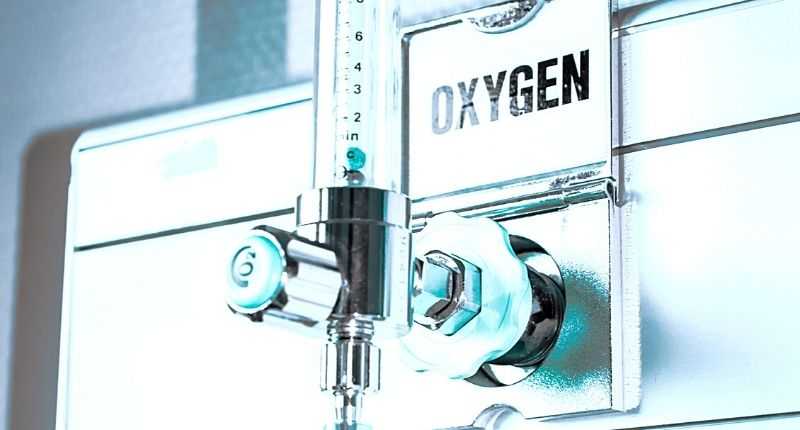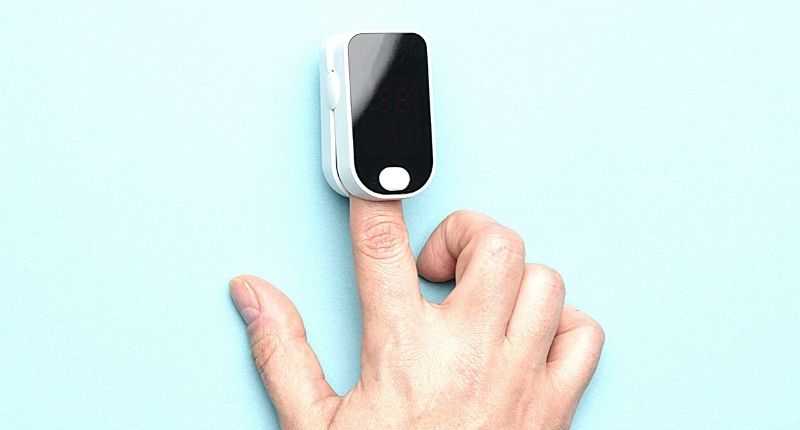Keep tabs on your health by learning how to measure oxygen levels at home. Your oxygen levels represent the amount of oxygen present in your blood. The haemoglobin in your red blood cells carries oxygen from your lungs to all other parts of your body. Your oxygen levels must stay within a specific range to maintain optimal health. Your body closely monitors its oxygen level to maintain the proper functioning of your organs.
A pulse oximeter measures the blood oxygen level in your body. People suffering from lung or heart conditions need to check their oxygen levels frequently. A pulse oximeter allows patients to check their blood oxygen levels from home. It serves as a welcome convenience for people with health conditions like hypoxemia, asthma, bronchitis, pneumonia, and Covid-19.
What Is a Pulse Oximeter?
A pulse oximeter, also known as a pulse ox or blood oxygen monitor/meter, is a lightweight, non-invasive, and handy device that clips to your finger, toe, or ear. It evaluates the oxygen saturation of arterial blood that the heart carries to the extremities of your body.
The transmissive pulse oximetry approach uses infrared light absorption to determine the percentage of oxyhaemoglobin in your blood, also known as the SpO2 level.
Doctors suggest oximeters for home use to assess the variation of a patient’s oxygen levels and pulse rates. This process allows doctors to provide better diagnoses of lung and heart conditions. A pulse oximeter also monitors oxygen saturation in newborns, the elderly, and people with severe health conditions. A healthy reading often provides patients with peace of mind.
What Is a Pulse Oximeter Used For?
Most commonly used by doctors, pulse oximeters measure patients’ blood oxygen saturation levels and heart rates. It provides an estimate of the percentage of oxygen in the blood to assist clinicians in determining the measure of lung damage and reviewing the success or failure of treatment. An oximeter keeps a check on the following:
- Shortness of breath due to low oxygen levels
- Blood oxygen levels during surgery
- Use of supplemental oxygen
- Oxygen levels while sleeping
More Reading: How Does A Pulse Oximeter Measure Heart Rate?

A pulse oximeter serves as a helpful tool to catch low oxygen levels at an early stage. Elderly individuals and Covid-19 patients can use an oximeter at home to keep a regular check on their oxygen levels. It also helps patients with lung and heart conditions, which disturb the circulatory system and prevent blood from flowing throughout the body.
Some of the health issues for which a pulse oximeter proves useful include:
- Chronic bronchitis
- Pneumonia
- Acute respiratory distress syndrome
- Lung cancer
- Collapsed lung
- Anaemia
- Pulmonary embolism
- Heart failure
- Congenital heart defects
- Covid-19
- Asthma
- Sleep apnea
How to Measure Oxygen Levels at Home?
A doctor may recommend a pulse oximeter for home use to monitor your oxygen level. In most cases, you will need to check your oxygen level at least twice a day. Physicians often suggest you keep tabs on your oxygen level during exercise or in the event of worsening symptoms. If you have cold hands or wear nail polish, the device might fail to detect your oxygen level.
Before checking your oxygen level and pulse rate, warm up your hand, remove any nail polish, and place your hand below the level of your heart. A medical practitioner will advise you when to check your oxygen levels and how to assess your readings. Alternatively, you can follow the instructions that come with the pulse oximeter.
The following steps outline the process to measure your oxygen levels at home:
- Turn on the pulse oximeter
- Clip it onto the end of your finger
- Wait a few seconds while the oximeter monitors your oxygen level and pulse rate
- Check the display for your blood oxygen level (SpO2)
- Check your pulse rate (PR)
- Keep a record of your oxygen levels
Pulse Oximeter Readings: How to Tell?
The pulse oximeter provides an accurate result within a 2% margin of error. A normal blood oxygen saturation level sits between 95% and 100%. A reading of 92% indicates an oxygen deficiency or hypoxemia. The brain becomes affected when blood oxygen levels fall below 80% to 85%. Cyanosis develops when the SpO2 level drops below 67%.

Some of the signs and symptoms of low oxygen levels include:
- Restlessness and discomfort
- Shortness of breath
- Difficulty breathing
- Cough worsens
- Bluish colour of the nails, lips or face
- Tightness or pain in the chest
- Fast pulse rate
What to Do If a Pulse Oximeter Reading Is Measuring Low?
Call your doctor or health care provider immediately if your pulse oximeter reading measures lower than 95% or if your symptoms seem to worsen. In some cases, the pulse oximeter reading may not show accurate results. Usually, an inaccurate reading results from one of the following causes:
- Cold hands
- Movement while taking the reading
- Poor blood circulation
- Nail polish
- Fake nails
- Tobacco use
- Sensor problem
- Finger not placed properly in the device
- Skin thickness
Where to Buy a Pulse Oximeter in Ireland?
It remains advisable to buy a pulse oximeter for home use if you suffer from a health condition or care for an elderly person living with you. For people who remain at risk of Covid-19, an oximeter can help you detect lung damage at an early stage.
You can find a pulse oximeter in nearly all pharmacies across Ireland. Alternatively, you can buy it online. At Argos, you can purchase an oximeter in the price range of €22 to €34 and receive delivery the next day. The pulse oximeters on Amazon UK range between €6 and €290.
Final Words
Covid-19 changed the way people live. With restrictions on venturing outside, a pulse oximeter allows you to stay in your home and monitor your health at the same time. The average level of oxygen in your blood should remain over 95%, even while wearing a mask.
However, not every reading proves accurate, and patients should not strictly rely on the oximeter at all times. If you feel any signs or symptoms of Covid-19, like breathlessness, dizziness, or discomfort, you must consult with your doctor or seek immediate medical assistance.
Shannon O’Sullivan
Shannon is a long time CBD user and health writer who has years of experience trying different CBD brands including Dr. Hemp Me, Endoca and more. Sign up for her free newsletter here or visit her Linkedin.
